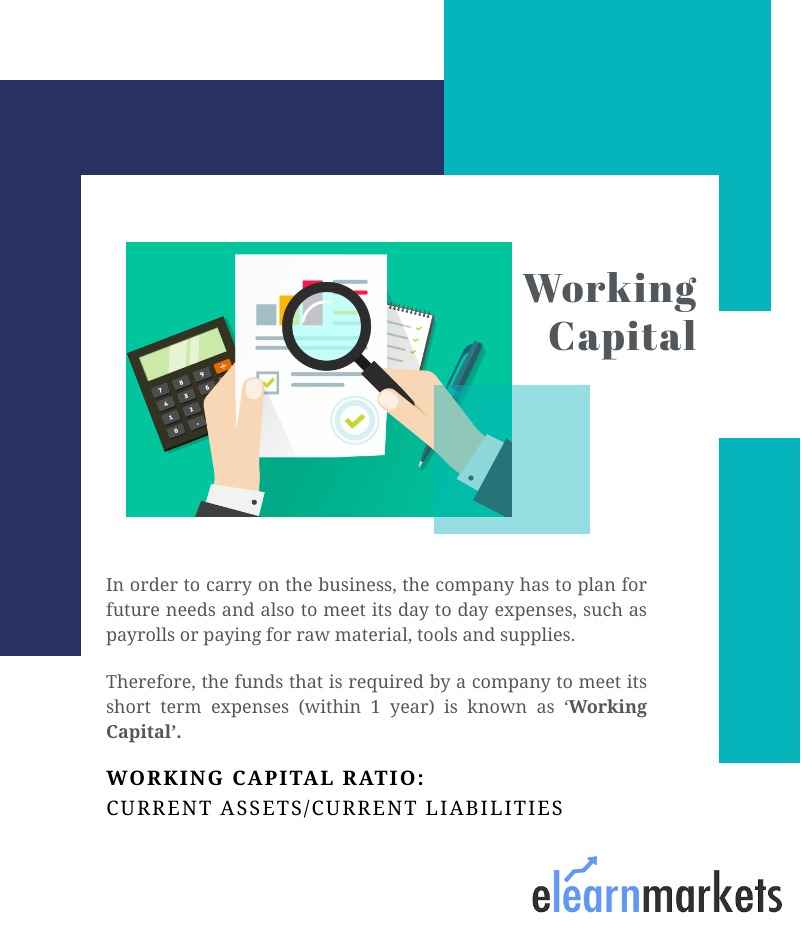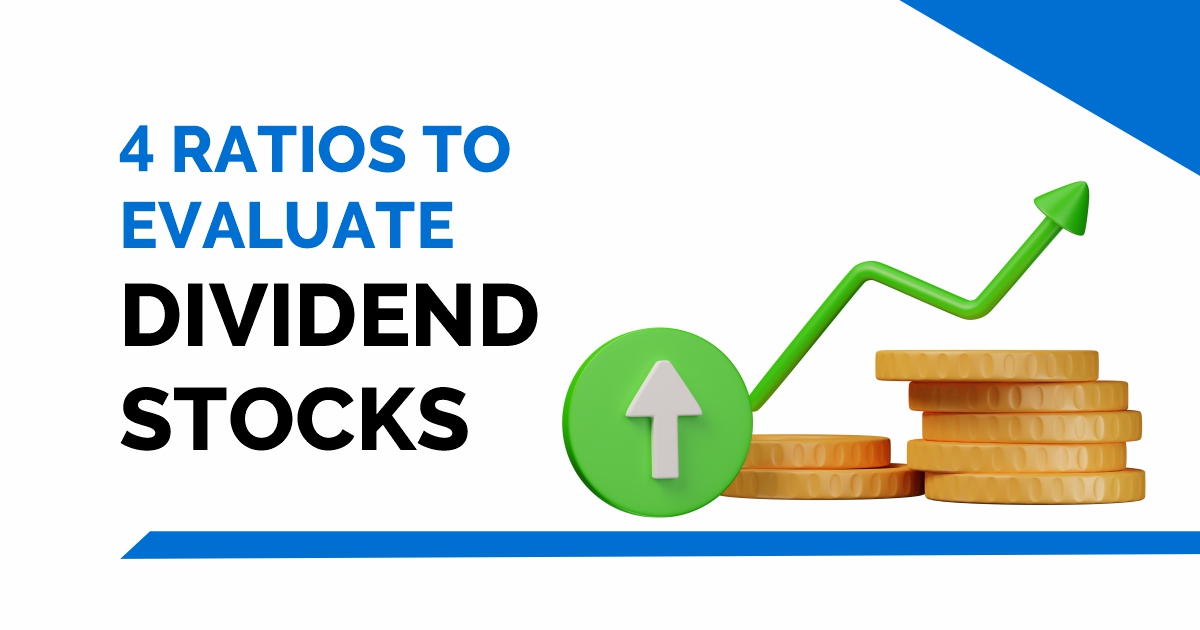In order to carry on the business, the company has to plan for future needs and also to meet its day-to-day expenses, such as payrolls or paying for raw material, tools, and supplies. To meet these expenses company requires cash.
Therefore, the funds that are required by a company to meet its short-term expenses (within 1 year) are known as ‘Working Capital’.
Working Capital meaning is the cash required to meet the company’s short-term expenses.
| Table of Contents |
|---|
| Working Capital Meaning |
| Where do I find Working Capital? |
| Why Working Capital is Important? |
| What is Working Capital Ratio? |
| What is Working Capital Cycle? |
Working Capital Meaning:
Suppose you have a company named RICA ltd.
It is a company manufacturing pens. Hence, requires cash to pay its raw material suppliers who give credit to the company for 3-4 months.
The company also receives cash by selling pens to its customers and retailers.
So, the company will calculate the difference between cash that is being received and payments that need to be done. This difference forms the working capital meaning.
In, accounting terms working capital meaning is the difference between Current Asset and Current Liability (they stand in the books for a year only).
Current Asset refers to cash that is readily available to the company and other assets that can easily be converted into cash within one year.
Current Liabilities refer to the amount which is to be paid off within one year.

Where do I find Working Capital?
Since working capital meaning is the difference between Current asset and current liability it is not shown in the Balance Sheet.
Instead, you can find Working capital in the Cash Flow Statement.
Do a complete study on Company Valuation with the help of Market Experts
Why Working Capital is Important?
Working Capital is very important for any company as it indicates the company’s financial health. It indicates whether the Company is in a position to meet its short-term expenses or not.
It helps to maintain the smooth operation of the business and helps in improving profitability and earnings. Using a forecasting tool can help your team maximize revenue throughout the sales-to-revenue process which will have a direct impact on working capital as the month progresses.
Investor, Business owners and accountant uses the working capital ratio to get an idea of the company’s liquidity position.
What is Working Capital Ratio?
The working capital ratio indicates readily available cash with the Company. A ratio between 1.2 to 2 is considered to be a healthy working ratio.
A company having a working capital ratio of less than 1 may not be good as it indicates poor cash flow of the company.
Working Capital Formula:
This is calculated by dividing Current Assets by Current Liabilities. Most often this ratio is calculated at year-end when annual reports are available.
WORKING CAPITAL RATIO: – CURRENT ASSETS/CURRENT LIABILITIES
A ratio less than 1 indicates that the company is having a shortage of cash which may not be good for any company as it increases liquidity risk and increases the possibility of higher short-term debt which comes at a higher rate of Interest and thus impacts overall profitability.
Let us understand this with an example:
Company:-Aegis logistics.
FY19 In Cars
CURRENT ASSETS 758
CURRENT LIABILITIES 789
WORKING CAPITAL RATIO 0.96
As of march FY19, current assets are Rs.758 cr and current liabilities are Rs. 789 cr.This means that current liabilities are higher than current assets and the working capital ratio is also less than 1.
This gives negative feedback on the company’s liquidity position.
Impact of Working Capital:
Since the ratio is lower as current liabilities are more so the company has to borrow more funds to run the day-to-day business of the company. This will in return hamper profitability.
So the alternate method to raise funds for running the daily business of a company can bring in some discounts on products or generate cash by giving some offers to the clients.
Basically, the company needs to increase the sale in order to get cash so that the company can meet the working capital demand internally but this can hamper the topline as the company might have to resort to lower margin selling.
Thus, higher working capital is good for the company. It shows that the company is in a position to pay its debt and to all its creditors within 1 year maintaining enough liquidity.
Working Capital Example
Company:-Nestle India Ltd.
FY19 In Cars
CURRENT ASSETS 3817
CURRENT LIABILITIES 2148
Working Capital Ratio 1.7
The company has a working capital ratio of 1.7 which is a good one.
This lies between the ideal ratio of 1.2 to 2. This shows that the company is in a position to pay its creditors and foot its bills within one year.
The company needs to manage its working capital ratio.
A ratio above 2 is also not good. It means that the company has lots of cash piled up and not using it for the growth of the business.
A lower/or decreasing working capital ratio shows that the company is having a shortage of cash and is unable to pay its creditors on time, This may lead to an increase in short-term loans for the company.
A very high or ratio above 2 is also not good for the company as it also gives a negative impact on the company.
The company should maintain its Working Capital ratio between 1.2 to 2 which is best for any company as it shows that the company is running its business smoothly.
Now for any company to run smoothly we should not only know the Working Capital ratio but also know the Working Capital Cycle
What is Working Capital Cycle?
Every company has to go through a cycle from raw material procurement to production to distribution and then to sales. Thus this process takes time. Thus money so invested in the business takes time to come back to the company. This entire process is known as the working capital cycle. It means how many days, a company takes to realize its sales value back.
It is calculated by Adding Inventory days and Receivable days and it subtracting the Payable days.
Working Capital Days:
For example, if a company takes 5 days to turn its Inventory into a product and gets its money back from sales in 15 days and makes payment to its raw material suppliers in 10 days then the number of days that the money comes back to the company is 5+15-10. Which means the money is rotated back into the business in 10 days.
Impact:
Thus a lower working capital cycle is good for a company as the liquidity for running the business remains intact, whereas a higher working capital cycle stresses the Balance Sheet of a company and also affects its Liquidity.
A higher working capital cycle may push the company for taking short-term loans to fund its working requirement and a short-term loan generally comes at a higher rate of interest.
Thus invest in companies with lower working capital cycles if all other metrics are strong.
Key Takeaways:
- Working capital meaning is the difference between the funds received from the debtors and the funds that need to be paid to the creditors.
- Working capital meaning indicates the position of a company’s financial health and very important for any business.
- Ideal working capital is 2:1.
- A ratio lower than 2 indicates the company is not in a position to pay its creditors within one year.
- A ratio greater than 2 indicates that the company is not using cash adequately in growing the business.
- The ratio between 1 and 2 indicates that the company is running the business smoothly and will help in increasing the growth of the business.
- A lower working capital cycle is good for a company whereas a higher one stresses the Balance Sheet.
Happy Learning!









